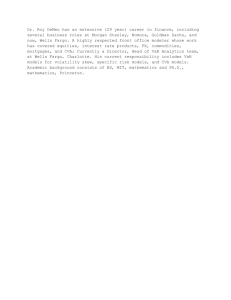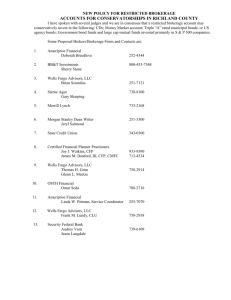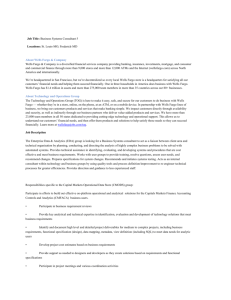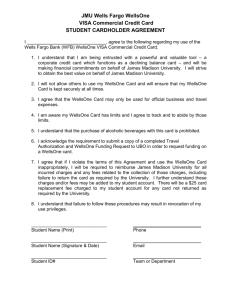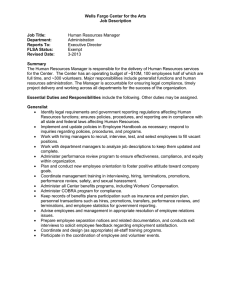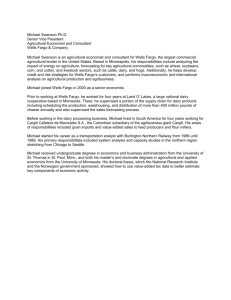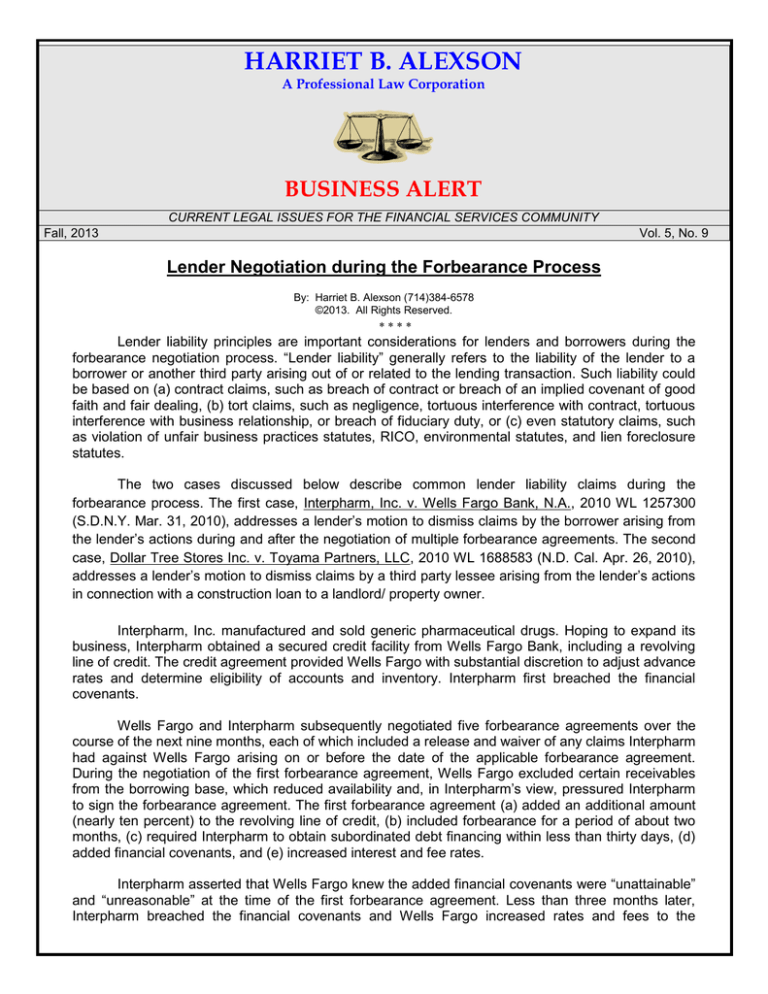
HARRIET B. ALEXSON
A Professional Law Corporation
BUSINESS ALERT
CURRENT LEGAL ISSUES FOR THE FINANCIAL SERVICES COMMUNITY
Fall, 2013
Vol. 5, No. 9
Lender Negotiation during the Forbearance Process
By: Harriet B. Alexson (714)384-6578
©2013. All Rights Reserved.
****
Lender liability principles are important considerations for lenders and borrowers during the
forbearance negotiation process. “Lender liability” generally refers to the liability of the lender to a
borrower or another third party arising out of or related to the lending transaction. Such liability could
be based on (a) contract claims, such as breach of contract or breach of an implied covenant of good
faith and fair dealing, (b) tort claims, such as negligence, tortuous interference with contract, tortuous
interference with business relationship, or breach of fiduciary duty, or (c) even statutory claims, such
as violation of unfair business practices statutes, RICO, environmental statutes, and lien foreclosure
statutes.
The two cases discussed below describe common lender liability claims during the
forbearance process. The first case, Interpharm, Inc. v. Wells Fargo Bank, N.A., 2010 WL 1257300
(S.D.N.Y. Mar. 31, 2010), addresses a lender’s motion to dismiss claims by the borrower arising from
the lender’s actions during and after the negotiation of multiple forbearance agreements. The second
case, Dollar Tree Stores Inc. v. Toyama Partners, LLC, 2010 WL 1688583 (N.D. Cal. Apr. 26, 2010),
addresses a lender’s motion to dismiss claims by a third party lessee arising from the lender’s actions
in connection with a construction loan to a landlord/ property owner.
Interpharm, Inc. manufactured and sold generic pharmaceutical drugs. Hoping to expand its
business, Interpharm obtained a secured credit facility from Wells Fargo Bank, including a revolving
line of credit. The credit agreement provided Wells Fargo with substantial discretion to adjust advance
rates and determine eligibility of accounts and inventory. Interpharm first breached the financial
covenants.
Wells Fargo and Interpharm subsequently negotiated five forbearance agreements over the
course of the next nine months, each of which included a release and waiver of any claims Interpharm
had against Wells Fargo arising on or before the date of the applicable forbearance agreement.
During the negotiation of the first forbearance agreement, Wells Fargo excluded certain receivables
from the borrowing base, which reduced availability and, in Interpharm’s view, pressured Interpharm
to sign the forbearance agreement. The first forbearance agreement (a) added an additional amount
(nearly ten percent) to the revolving line of credit, (b) included forbearance for a period of about two
months, (c) required Interpharm to obtain subordinated debt financing within less than thirty days, (d)
added financial covenants, and (e) increased interest and fee rates.
Interpharm asserted that Wells Fargo knew the added financial covenants were “unattainable”
and “unreasonable” at the time of the first forbearance agreement. Less than three months later,
Interpharm breached the financial covenants and Wells Fargo increased rates and fees to the
applicable default rates. Later that month, Wells Fargo excluded certain accounts from eligible
accounts, based on the account debtors’ rights to charge back. Interpharm was unable to pay
suppliers and eventually, concerned that it could not make payroll, which prompted Interpharm to
enter into a second forbearance agreement with Wells Fargo.
The second forbearance agreement was short-term “interim” forbearance agreement to
address Interpharm’s immediate issues. It included (a) additional security interests in favor of Wells
Fargo, (b) Interpharm’s agreement to hire a chief restructuring officer acceptable to Wells Fargo who
would prepare a budget, request advance from Wells Fargo, make payments to Interpharm’s creditors
and administer the budget, (c) amended the definition of eligible accounts to exclude all wholesalers,
and (d) an agreement to forbear for a period of three days.
The third forbearance agreement, which was entered into four days after the second, included
(a) an agreement to forbear for a period of four months, (b) required Interpharm to reduce payroll
expenses by twenty percent, and (c) required Interpharm to take action to sell its real estate. About
thirty days later, Wells Fargo reduced the advance rate on inventory by about ten percent, based on a
third-party liquidation value analysis of inventory, which reduced availability and prompted the fourth
forbearance agreement.
The fourth forbearance agreement (a) changed the inventory advance rate to forty-nine
percent or a lesser rate determined by Wells Fargo in its sole discretion, and (b) added the account of
one of the wholesalers back in as an eligible account. Interpharm then executed two agreements to
sell Interpharm’s assets. To obtain funding through the closings of the asset sales, Interpharm entered
into a fifth forbearance through closing and a forbearance fee due at closing for the asset of sales.
Thereafter, Wells Fargo demanded a release and waiver of claims form from Interpharm as a
condition to releasing Wells Fargo’s liens on the property to be sold. Interpharm refused and then
asserted that Wells Fargo’s refusal to release liens caused Interpharm to structure the sales in a way
that resulted in significant tax liabilities to Interpharm. Wells Fargo also deducted attorneys’ fees from
an amount it returned to Interpharm without explaining the reason for the attorneys’ fees.
Interpharm then repudiated the forbearance agreements and sued Wells Fargo, asserting
claims for (1) breach of contract with respect to the credit agreement and the forbearance
agreements, (2) breach of the duty of good faith and fair dealing, (3) tortuous interference with
business expectations, (4) unjust enrichment, and (5) breach of fiduciary duty. Wells Fargo filed a
motion to dismiss based on the broad release and waiver contained in the forbearance agreements.
The Court dismissed all but two claims against Wells Fargo.
The Court referred to the “well settled” rule under New York law that a clear and unambiguous
release that is knowingly and voluntarily entered into is enforceable, unless there is legal defense
such as fraud, duress, or undue influence. Although the Court found that the release and waiver in the
fifth forbearance agreement was unambiguous and clear, Interpharm asserted that the release and
waiver should be voided because Interpharm was under economic duress at the time.
The Court stated that a release between two sophisticated parties is “voided for economic
duress only in ‘extreme and extraordinary cases’”, went on to list the elements necessary for
economic duress: the plaintiff must be compelled to agree by means of wrongful (unlawful) threat and
precluded from exercising free will (no other alternative). Here, the Court found that Wells Fargo’s
actions did not constitute wrongful threats and that Interpharm was not compelled to agree to the
release.
After finding that the release was not voidable for economic duress, the Court determined that
the release was effective to release claims arising at or before the fifth forbearance agreement, but
not to release any claims relating to Wells Fargo’s actions after the fifth forbearance agreement.
2
Dollar Tree Stores Inc. operated a retail store in a shopping center that was in need of
renovation. Comerica Bank financed the renovation project with a construction loan to the landlord.
Dollar Tree asserted that the renovation interfered with its business and negotiated a settlement with
the landlord. Under the terms of the settlement, Dollar Tree agreed, among other things, to vacate the
premises for a period of time and then to accept replacement premises in the newly renovated
shopping center, which would include Dollar Tree and another retail business as anchor tenants. The
settlement also included $500,000 closing fee to Dollar Tree, financed through the Comerica load,
rent abatement and other monetary compensation.
Before the renovation project was completed, the other anchor tenant terminated its lease,
which resulted in a default under the Comerica construction loan. In response to the default, Comerica
ceased further funding of the renovation project, which remains incomplete. The landlord failed to
provide replacement premises in the newly renovated shopping center to Dollar Tree, which violated
the terms of the amended and restated lease agreement.
Dollar Tree sued the landlord and Comerica. Its claims against Comerica included tortious
interference with contract, tortious interference with prospective economic advantage, breach of a
subordination, non-disturbance and attornment agreement, breach of the implied covenant of good
faith and fair dealing, lender liability (based on negligence) and unfair competition. Comerica filed a
motion to dismiss, which the Court granted.
In granting the motion to dismiss, the Court applied the facts to the elements of each claim:
The elements for tortuous interference with contract are:
(1) A valid contract between plaintiff and a third party;
(2) defendant’s knowledge of this contract;
(3) defendant’s intentional acts designed to induce breach or disruption of the contractual
relationship;
(4) actual breach of contractual relationship; and
(5) resulting damage.
Dollar Tree asserted that Comerica’s agreement to finance the renovation project was a
conspiracy between Comerica and the landlord intended to cause a breach of the original
lease and the Comerica’s decision to cease funding caused a foreseeable breach of the
amended and restated lease entered into in connection with the settlement. Here, the Court
focused on element (3) and held that the facts did not support a “plausible theory” that
Comerica intended to induce breach of either lease. The Court also noted that Comerica’s
decision to cease funding, which was consistent with its rights under the construction loan
agreement, was for “legitimate business purpose and was justified…”
In conclusion, both of the fact patterns are good illustrations of the current method of
negotiation during a loan workout. These cases also held that the lenders’ conduct did not rise to the
level of lender liability. Lenders still must be very careful and thoughtful in negotiating forbearance
agreements and in having borrowers agree to meaningful releases.
Actual resolution of legal issues depends upon many factors including variations of fact and state laws. This article is not
intended to provide legal advice on specific subjects but rather to offer insight into legal developments and issues. Consult
with legal counsel before taking action on matters covered in this article. Copyright 2008 Harriet B. Alexson. All rights
reserved.
3

